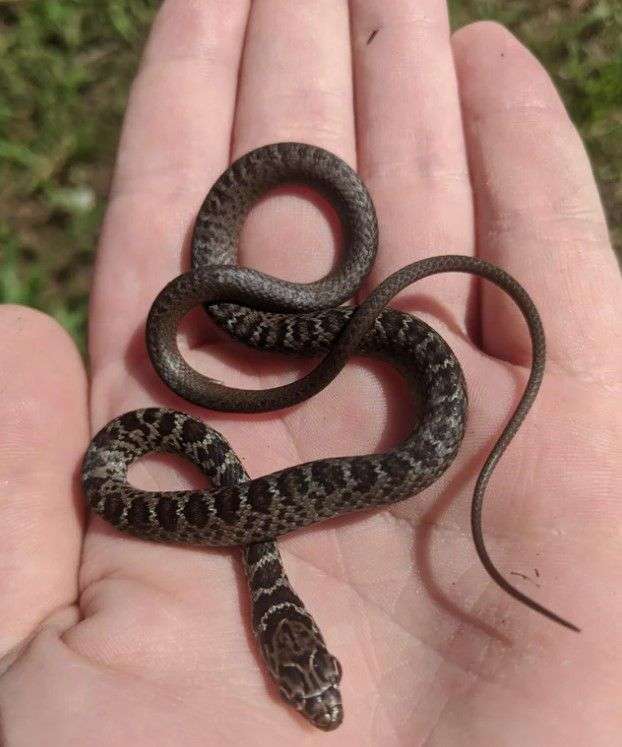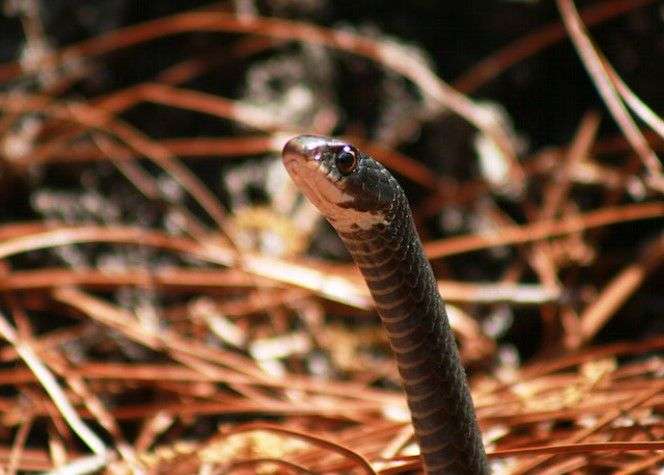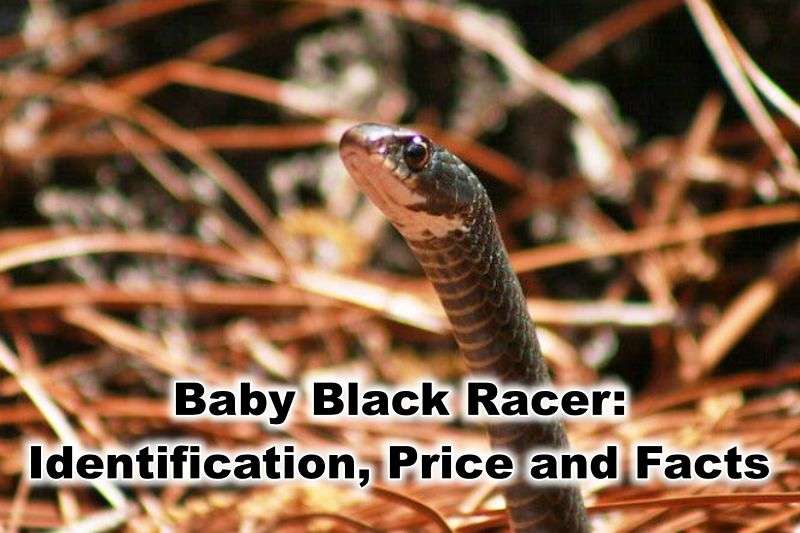Snakes might not seem like a trendy pet choice, like cats and dogs, but they certainly have their own fanbase. Many people around the world prefer to have snakes as pets, and one of the popular snakes for this is the baby Black Racer Snake. If you’re also thinking about having a baby black racer as your companion, go along with us as we talk about the identifying features, price, care guide, and interesting facts about baby black racer snakes.
The black racer snake (Coluber constrictor) is a species of nonvenomous snake. They are endemic to North and Central America, more specifically, east of the Rocky Mountains.
Baby Black Racer: Identification (How to Identify)
When you go to a pet shop or online to find a baby black racer, remember that the juvenile and adult forms of the snake look different. The coloration and patterns of the baby snake darken as it grows mature.
A juvenile black racer is obviously smaller, somewhere around 10-17 inches, than its adult counterpart, which can grow up to 5 feet long. The baby snakes are lighter in color and have prominent brown markings in rows.
The tail, however, is without patterns and more reddish in color. The ventral side of the snake is even lighter and grayish and has far fewer markings. The eyes are brown with round pupils.
Price

The price of a baby black racer snake is somewhere between $24.99 and $39.99. It can vary depending on where you live and the seller. The price of an adult is a little more, around $49.99. There can also be confusion with other racer snakes that has similar looks but are ultimately different.
Another very popular choice for a racer snake is the Blue Racer (Coluber constrictor foxii) which is known for its beautiful blue coloration. Reptile breeders sell the blue racer at somewhere around $50 to $100.
So before you buy your baby black racer, make sure you check for all its identifying features and talk with the breeder.
Note: The prices mentioned in this post are entirely based on online sales shown on Google. We’re not breeders, and this post is for educational purposes only.
Interesting Facts
- Black racer snakes are very fast and have excellent vision.
- One of its subspecies, the Northern Black Racer, is the state reptile of Ohio.
- While the snakes are constrictors, they don’t really constrict their prey. Instead, they pin and suffocate the prey into submission. If the prey is small, they’ll simply swallow it.
How to Take Care

- Black racers are not usually aggressive, but if they’re cornered, they’ll attack and bite. When frightened, they’ll emit a horrible-smelling odor from their cloacae. So handle them with care. Black racers also vibrate their tails, similar to rattlesnakes, when they are scared.
- Some of the subspecies of black racers climb trees to eat the eggs of birds and often hide in bushes. But their preference is to crawl in open grassland-type habitats, so make sure to get a tank big enough to give them the space.
- Baby black racers mostly eat small-bodied invertebrates, like soft-bodied insects and such. They also eat small vertebrates like frogs, rodents, shrews, and reptiles, including other snakes, their eggs, small lizards, etc. As the snake matures, it will eat similar things, though not going for the small ones anymore.
- Baby black racers usually hatch in the early fall. The hatchlings mature in about two years.
- While black racers are pretty hardy and low-maintenance, they are not immune to fungal and bacterial infections. They can also have necroulcerative dermatitis. If your baby black racer is sick, take them to a veterinarian who specializes in reptiles.
That is all for today. We hope this article helps you with your baby racer snake. Make sure to comment if you have any questions. We’ll do our best to answer them. Also, if you’re interested in snakes or reptiles in general, you can check out some of our other articles.
Also Read:
Anamika has a fascination with all living things. Being a Zoology student, she loves to know new interesting things about animals. She’s also a very keen fan of manga and anime. Writing is her passion, and writing about her favorite things is her boost of serotonin.

